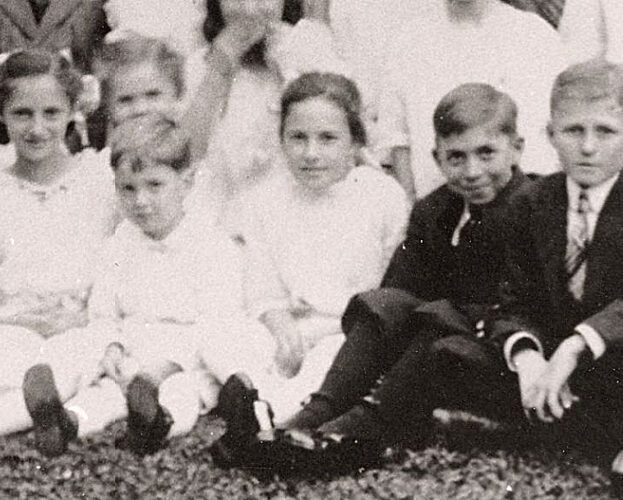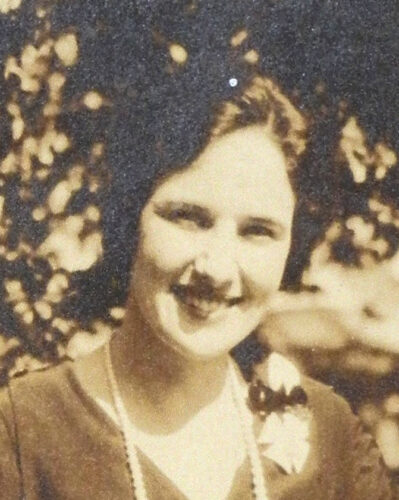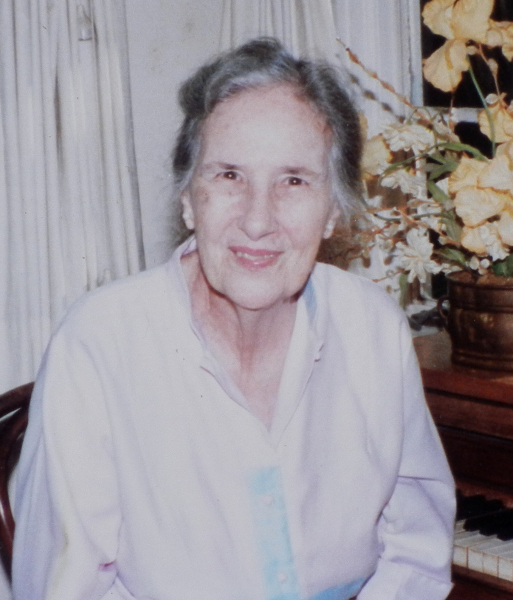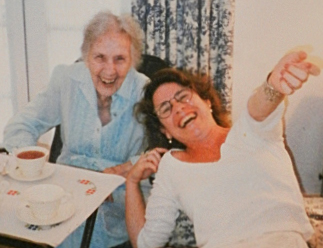JOY!… The site’s arduous resurrection has finally happened. Wasting no time, I’m gonna dive right in, and I may as well do it with a bang.
What I’m working on right now is the Lake Charles chapter of my grandmother’s life. She told me nothing of her childhood, and the only childhood picture there was of her showed her face in the deep shadow of the noonday sun, her features unrecognizable. I had no idea what she looked like as a child. But I knew where her house was, and I found her world, gradually, pouring through the McNeese photo archives of Lake Charles in the 1900s and 1910s, one eye-opener after another. Likewise with the Sanborn fire insurance map from 1909, 2 years after her family moved to Lake Charles from the family’s sugar cane farm on Bayou Teche in St Martin Parish. I’ll celebrate this whole blog resurrection and christen the Lake Charles chapters in particular, with possibly the best thing I will ever find in my Lake Charles research. I don’t see how I could top it. I’ll back up a bit, though.
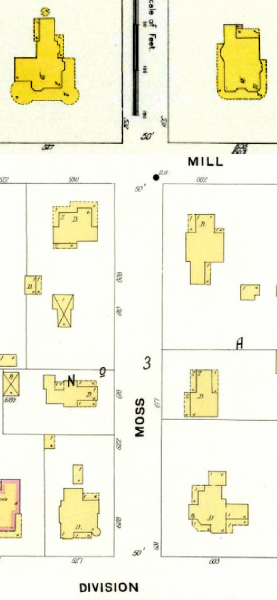
The Sanborn map showed me my Tisolay’s house in perfect outline, 617 Moss, between Mill and Division, the middle house on the right side. I’d grown up with Tisolay’s photo of her house, and was delighted to see on the map an added tidbit that couldn’t be seen in the photo, the outline of a 1-storey back porch off the kitchen door.
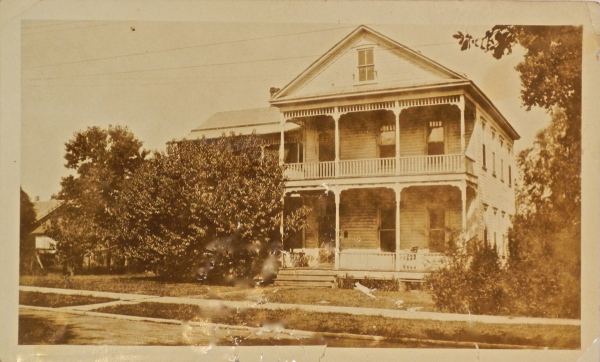
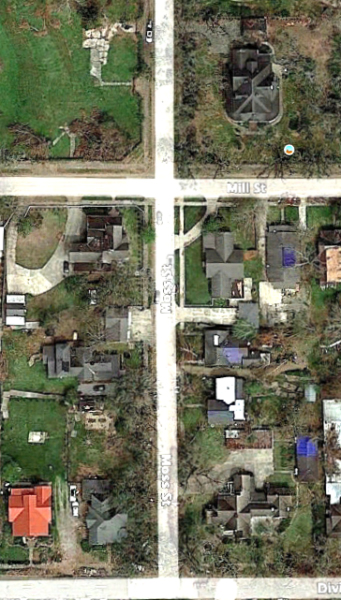
It also showed me the outline of a big house on the opposite corner, across the street, whose broad, L-shaped verandah had enormous rounded extensions at the front corners. I’d seen a magnificent house like it in the archives and went in search of it. Plugging the address into the McNeese archives didn’t show me anything. The present-day Google Earth view only showed me a well-kept lawn where the house had been, which I’d already seen from the many times I’d checked on Tisolay’s house after the one-two punch of hurricanes that hit Lake Charles in 2019.
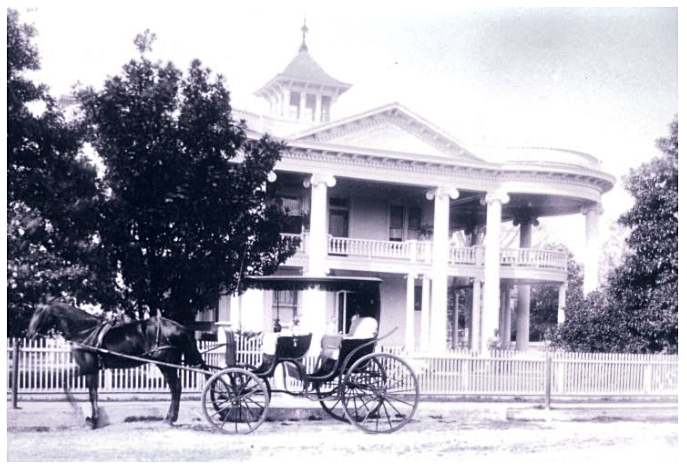
The town’s 1911 directory, though, listed that address as belonging to a J A Bel, a name I recognized as one of the town’s big lumber magnates. And McNeese had plenty on the much-documented Bel house, including a full shot of the house dated the same year as Sanborn, 1909, exactly as Ti would have seen it. She could have been sitting in her front window at home, not yet in school at age 4, when the photographer took this shot, maybe have seen the horse and carriage in this shot pull up in front of the house.
There was something about the architecture of the house that was unlike what I’d seen from the same period in New Orleans, but I couldn’t put my finger on what it was until I saw a close-up of the verandah in a second photo from the McNeese collection captioned ‘Bel house garden party’.
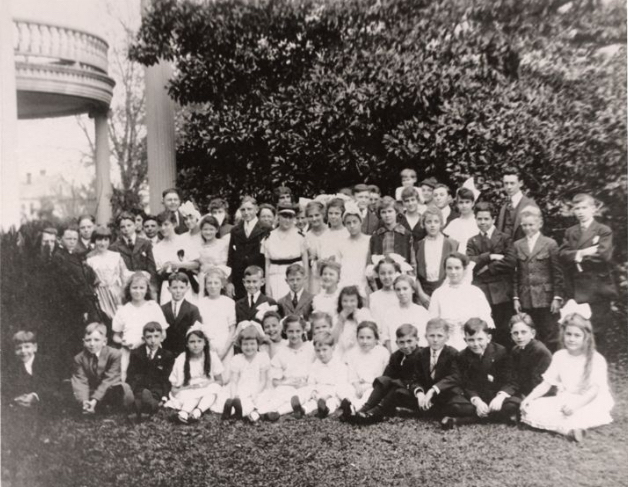
In the garden party shot, 50 or 60 children were lined up loosely in rows that extending out from the corner of the verandah, and plainly visible was a second set of columns, smaller and only 1 storey high, set inside the ring of larger ones. They held up the 2nd floor verandah without any connection to the large main columns in front or the roof above them, which fascinated me.
The caption dated it to 1920. The caption was wrong.
I don’t know why my eyes went so unerringly to the face of a small 8-yr-old girl sitting cross-legged in the front row, but the differences that spanned 70+ years between the face of that girl and the face I loved more than any other on earth fell away, irrelevant. The little face soon blurred away behind two lakes of tears, and the thought blipped into my mind that I should tag McNeese’s photo somehow, saying that it couldn’t have been from 1920, because my grandmother was 8 years old in 1913.
